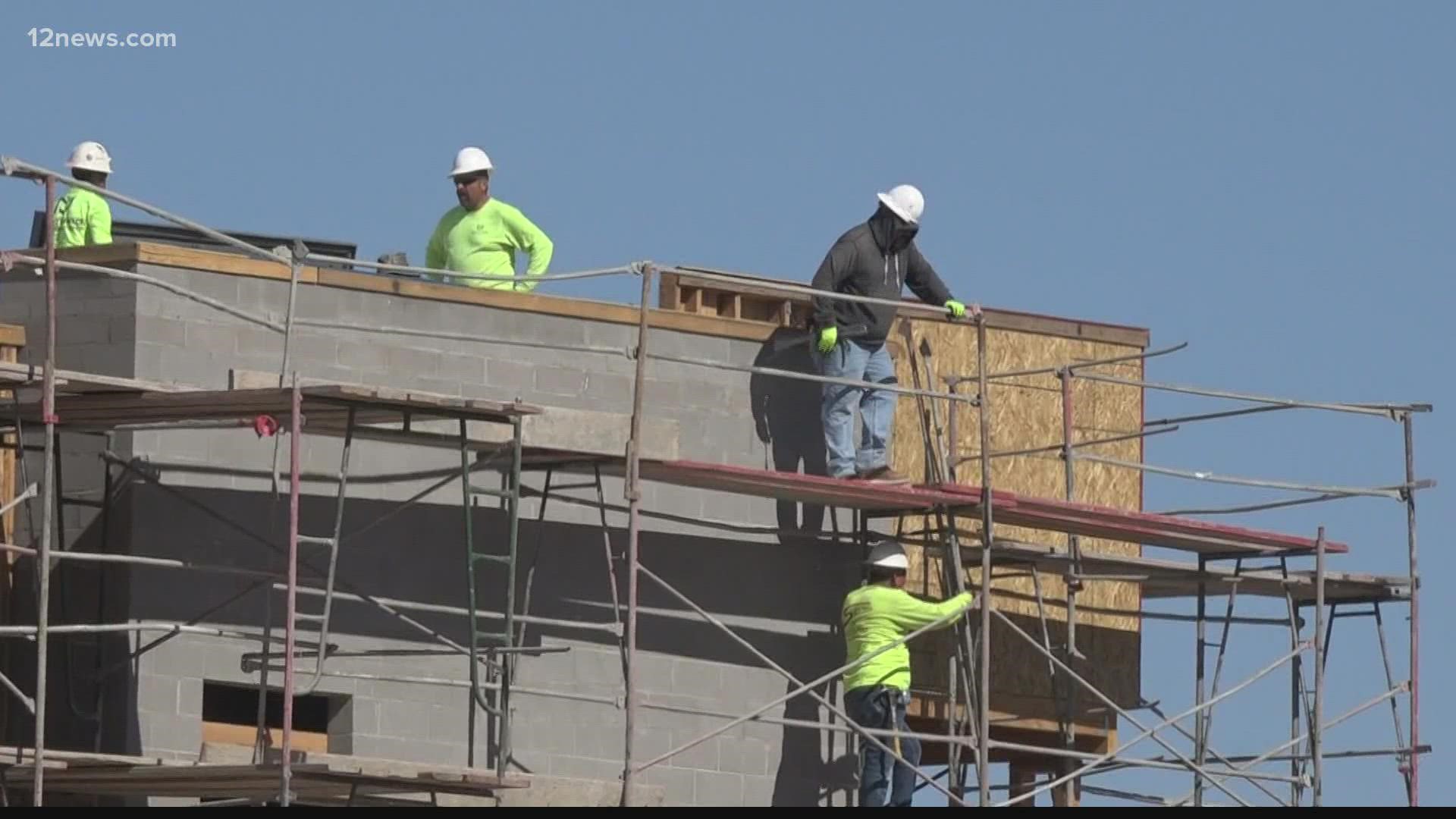ARIZONA, USA — High rents, high home prices and not enough to go around are the state of the housing market in Arizona.
Developers said that they’re trying to add more supply to fill the need for places to live in the state, but they’re running into roadblocks.
More supply needed
New apartments continue to be constructed across the Valley. Even just a quick drive around Phoenix will prove there are dozens of new places to live being built.
“It definitely appears from just an average community member that we’re building too many apartments…but we’re not,” Nat Stum, principal with Martingale Investment Partners said.
Estimates are into the 10s of thousands of apartments needed to meet the demand in Maricopa County, not to mention the thousands of more homes needed too.
“That’s the challenge we’re facing now as apartment developers is the difficulty in getting properties rezoned for apartments to meet the demand that there is for rental housing,” Stum said.
Stum called it ‘apartment fatigue’, where cities – whether the city planners, city council, or the residents they represent - are burnt out on high-density housing.
“They're tired of seeing so many apartments built in their cities and towns, and they want lower density residential, or more retail commercial on some of these sites that we're pursuing,” Stum said.
Lack of land
There’s a handful of factors causing not enough development, according to researchers at Arizona State University’s Morrison Institute of Public Policy.
Alison Cook-Davis, the Associate Director for Research at Morrison Institute said her and her team’s research has found land and construction prices, public resistance to affordable housing projects, existing affordable housing programs, and a lack of land zoned for high-density projects are leading to not enough affordable housing development to meet demand.
“Within the Phoenix Metro area, 80% of the land is zoned for single family homes. And so that means even if developers wanted to create more multifamily developments, zoning regulations may prevent them from doing so,” Cook-Davis said. “And in order to update zoning regulations include to include more multi-family homes, it's contingent also on public support.”
Cook-Davis and her team offered ideas as well on how to help develop more affordable housing, including helping make construction more effective, including offering incentives for developers to build affordable housing.
“While it's not much less expensive to build an affordable development, landlords don't make nearly the profit that they could if they were building luxury apartments,” Cook-Davis said.
Not a quick process
Affordable housing developers are making it happen, but it takes time.
Driving down 19th Avenue north of Camelback, construction is underway on a 300 unit affordable housing development.
“There’s just endless, endless demand,” Steve Capobres, Executive Director at Housing for Hope Inc., a branch of Catholic Charities, where Capobres also serves as the Vice President of Business Development.
Capobres said they broke ground on the development they’re calling Mesquite Terrace over the summer. Capobres said it will nearly double their supply of affordable apartments, but he said they fill up fast.
Capobres used a development they completed last year that has 70 units, Capobres said it filled up in two months.
“We immediately start waiting lists, and these waiting lists can be upwards of 400 names long,” Capobres said. “And we don't want to keep them too long, because you don't want to give people false hope.”
Building more isn’t a fast process. Capobres said the Mesquite Terrace site has been three years in the making.
“The biggest challenge is land,” Capobres said. “Because finding a decent site where the land prices are affordable for you to make the numbers work is always the challenge.”
“If there was more capital out there, agencies like us, we would be developing 300 unit communities every year, if I could,” Capobres said.
Up to Speed
Catch up on the latest news and stories on the 12 News YouTube channel. Subscribe today.

